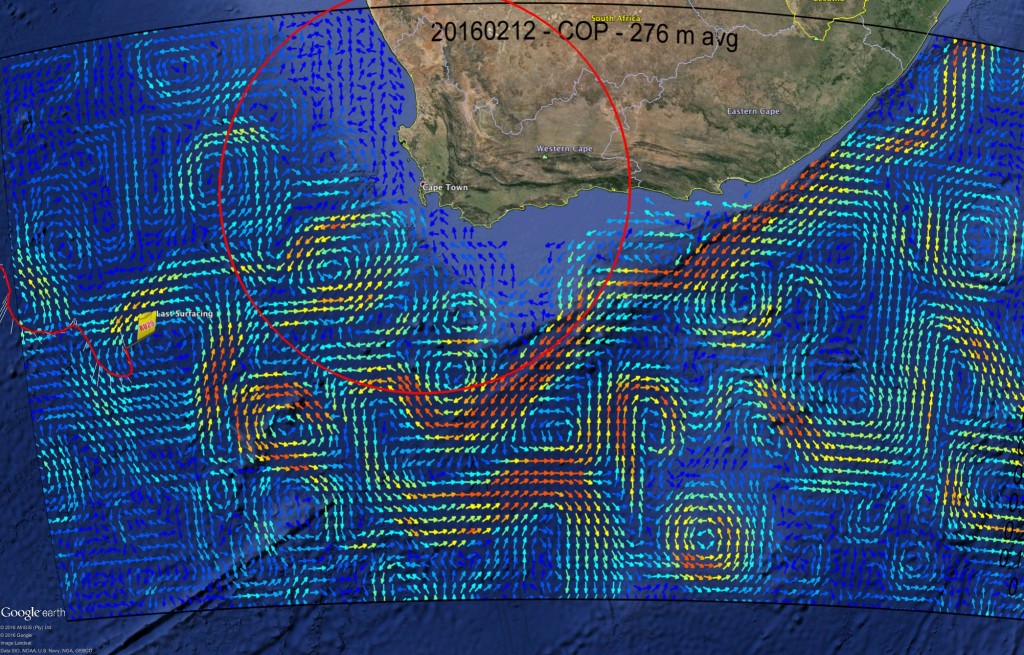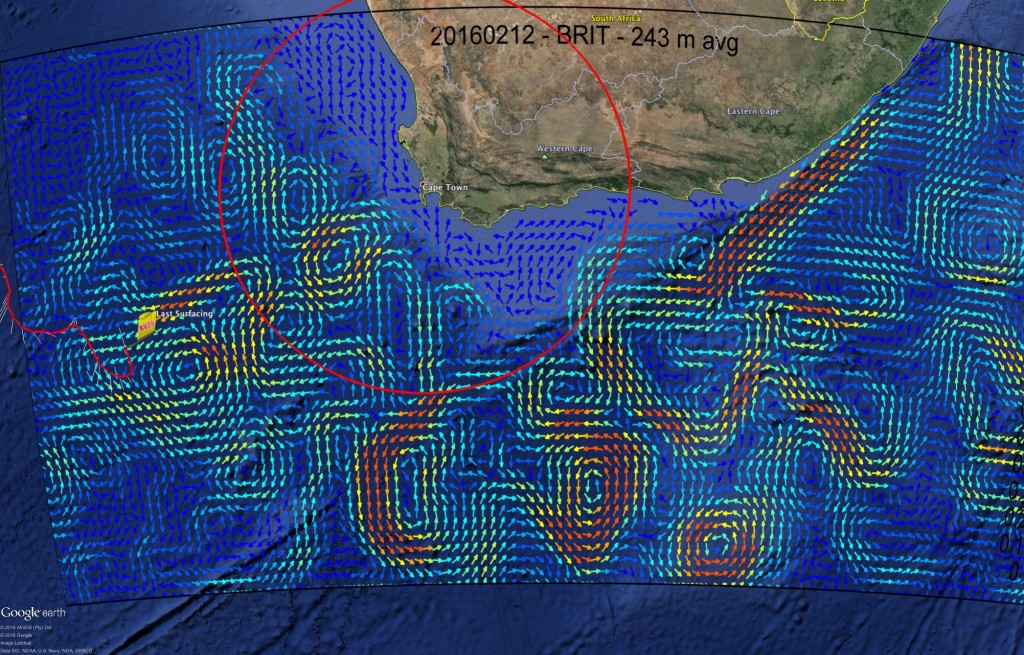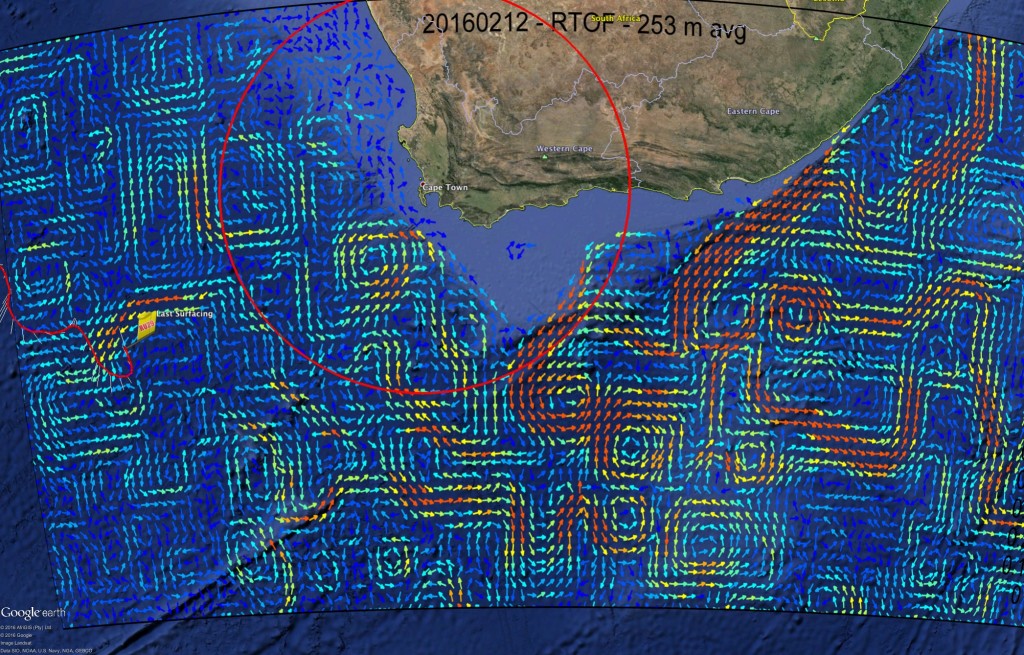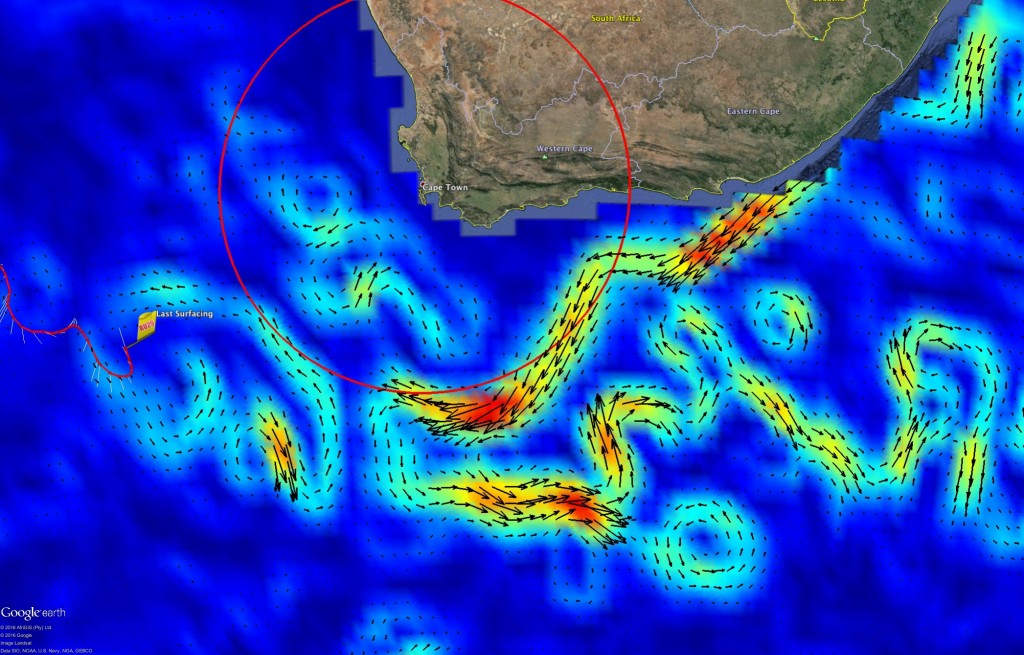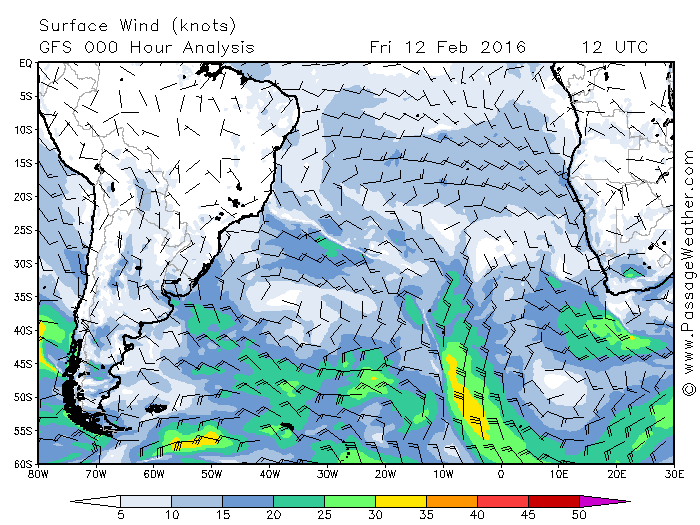Over the course of this week, the glider team pumped out a number of new model visualization products to aid in piloting. We are now looking at 5 model out puts in total including RTOFS, Copernicus, OSCAR, HYCOM and GLOSEA5. The only problem is, none of the 5 models we are looking at agree with the currents produced by the glider.
While RU29 is reporting that the current is strong to the north, the following are todays forecasts from our five models:
Copernicus is showing 29 should be feeling the effect of warm core eddy as we fly the west side where we should be feeling a current flowing south-soutwest.
The British GOSEA5 model shows that the current should almost be predominately west with a little bit of a southern component.
HyCOM shows a current mostly due south with little bit of a western component
RTOFS is showing the glider entering a strong jet flowing to the south west.
and OSCAR shows that we are in the middle of an eddy where there should be a very weak southward current.
The glider however is seeing a very strong current to the north which resulted in making 27 km progress during the last 13 hr segment.
The problem with this area is that the current is very dynamic making it nearly impossible for a 24 hr forecast to capture what is truly happening. One forecast that is accurate however is the wind maps which are lining up nearly perfectly with the surface drift 29 sees when she is calling in at surfacings.
The next surfacing will be around 6pm tonight. Since we have no idea where the glider will be at this call with the lack of a reliable road map, we will grab the glider when it calls in and depending on its position, we will give it one of two way points (35˚, 12˚ or 35˚ 30 13˚) as we try and fight our way through the unknown current that is pushing 29 to the north.
Force Wind Sea & Honor
